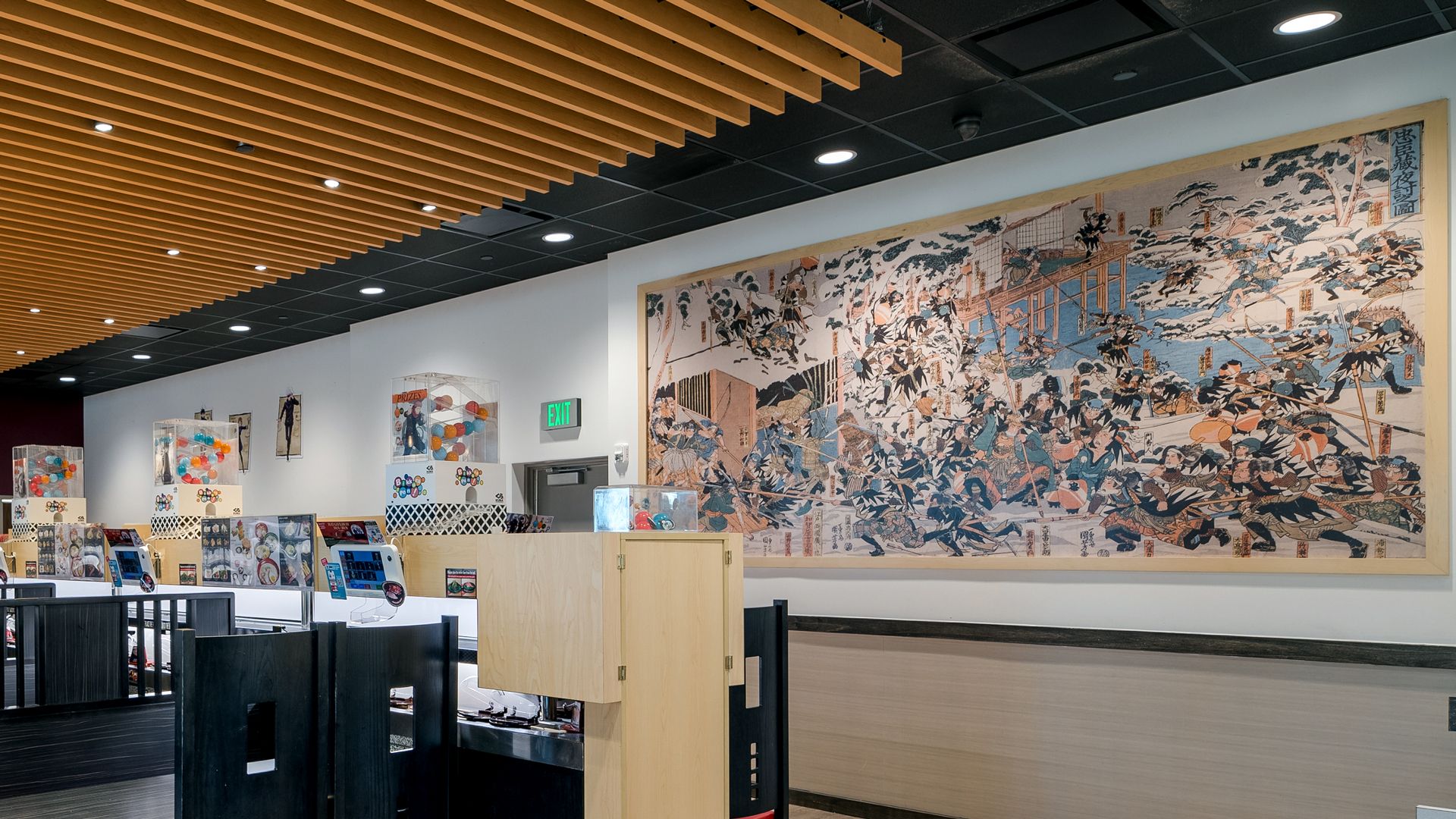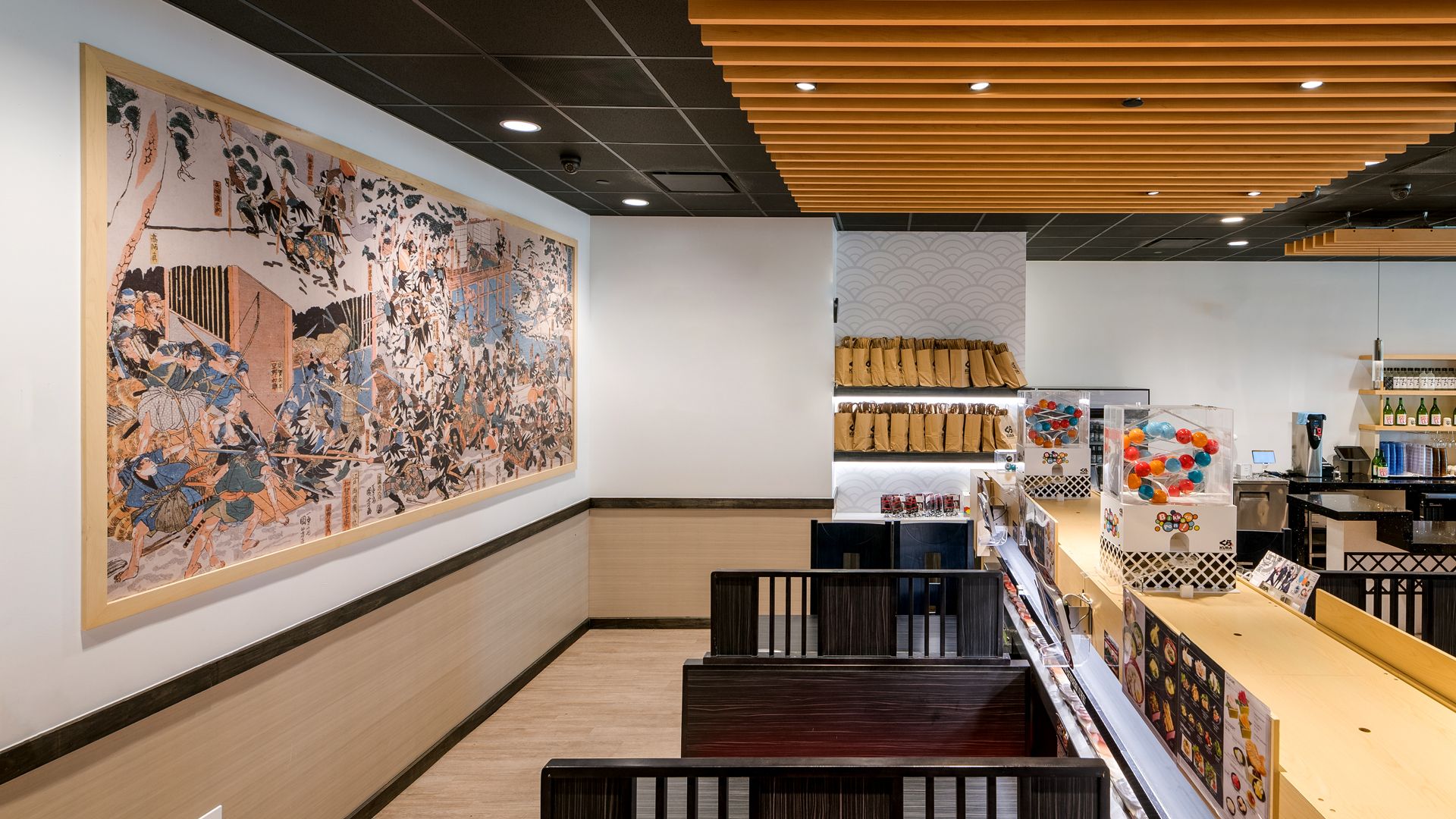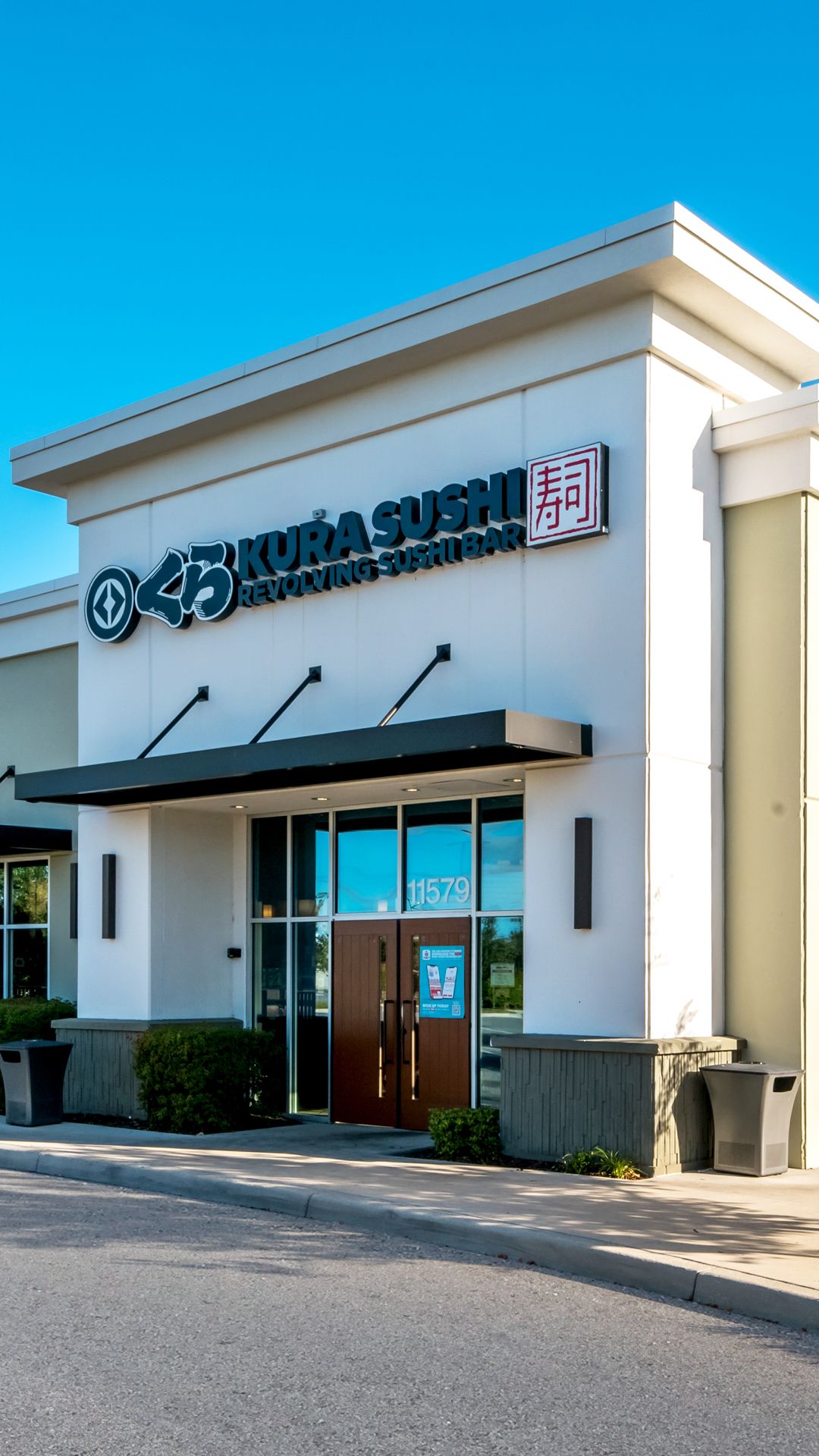Orlando, FL 32821
Phone: 321-401-6777
Hours
- Mon: 11:00 AM – 9:30 PM
- Tue: 11:00 AM – 9:30 PM
- Wed: 11:00 AM – 9:30 PM
- Thu: 11:00 AM – 9:30 PM
- Fri: 11:00 AM – 10:00 PM
- Sat: 11:00 AM – 10:00 PM
- Sun: 11:00 AM – 9:30 PM
Featured Artwork


忠臣蔵夜討之図 (Chūshingura Yo-Uchi no Zu, or Chūshingura Night Attack)
歌川国芳 (Utagawa Kuniyoshi)
Utagawa Kuniyoshi (1797 – 1861) was one of the last masters of the ukiyoe form. He belonged to the famed Utagawa school, which included geniuses like Hiroshige, Yoshitoshi, Kunisada, and of course, Kuniyoshi himself. At the age of 14, he began apprenticing under Utagawa Toyokuni, who in turn had studied under the founder of the Utagawa school. His early works focused on actors and courtesans, which were effectively an early form of the tabloids we read today. He found true success through his adaptations of literary classics, like the Chinese epic Water Margin. He was particularly famous for the kineticism of his action scenes, which were later perfected by his apprentice Yoshitoshi, whose paintings look like they’re practically moving in slow motion. Later in his career, the Tenpo Reforms banned the depiction of actors and courtesans in art; Kuniyoshi continued to paint his beloved actors and courtesans, eluding censorship by caricaturing his subjects as cats.
“Chūshingura”, or “The Treasury of Loyal Retainers”, refers to a historical event in early 18th century Japan since immortalized in countless kabuki, bunraku, film and TV adaptations, in the same way that the Gunfight at OK Corral is a favorite subject for Western movies. Chūshingura even saw a Hollywood adaptation with the 2013 flop 47 Ronin starring Keanu Reeves. Other film adaptations may have been more renowned, such as those by Mizoguchi (director of Ugetsu), Inagaki (director of the Miyamoto Musashi trilogy), or Fukasaku (director of Battles Without Honor or Humanity; best known in the West for Battle Royale), but none feature more monsters than 47 Ronin.
Chūshingura is a timeless story of loyalty, brotherhood, and vengeance. A feudal lord named Asano was forced to commit seppuku (ritual suicide) for the transgression of drawing his blade at Edo Castle, the headquarters of the shogunate government, after being insulted by a court official named Kira. Asano’s clan and holdings were dissolved as well, leaving Asano’s 300 men as ronin, or landless, lordless ex-samurai, who were banned from keeping their swords. 47 of these men pledged to avenge their lord, knowing that vigilante revenge would guarantee their executions. Led by Ōishi, the 47 ronin bade their time for two years acting as drunken vagrants to trick Kira’s spies and lull him into a false sense of security. The 47 ronin stormed Kira’s mansion on January 31, 1703. After capturing Kira, Ōishi gave him the option to commit seppuku, in deference to Kira’s high status, handing Kira the very dagger Lord Asano had used for seppuku. A terrified Kira refused and begged to be spared. Growing tired of waiting, Ōishi decapitated Kira with Asano’s blade. The ronin then visited Asano’s grave, placed his dagger and Kira’s head on Asano’s tomb, and then turned themselves in. Although the ronin had obviously broken the law, their actions were seen as an honorable fulfillment of a samurai’s duties, resulting in many people petitioning the government on the ronin’s behalf. The shogun agreed by sparing them of humiliating executions, and allowing them to die honorably as samurai by committing seppuku themselves. The 47 ronin and Lord Asano were buried together at the Sengaku-ji temple in Tokyo, where they remain to this day.

See it in person at
Kura Revolving Sushi @ Vineland
11579 Regency Village Dr.
Orlando, FL 32821
